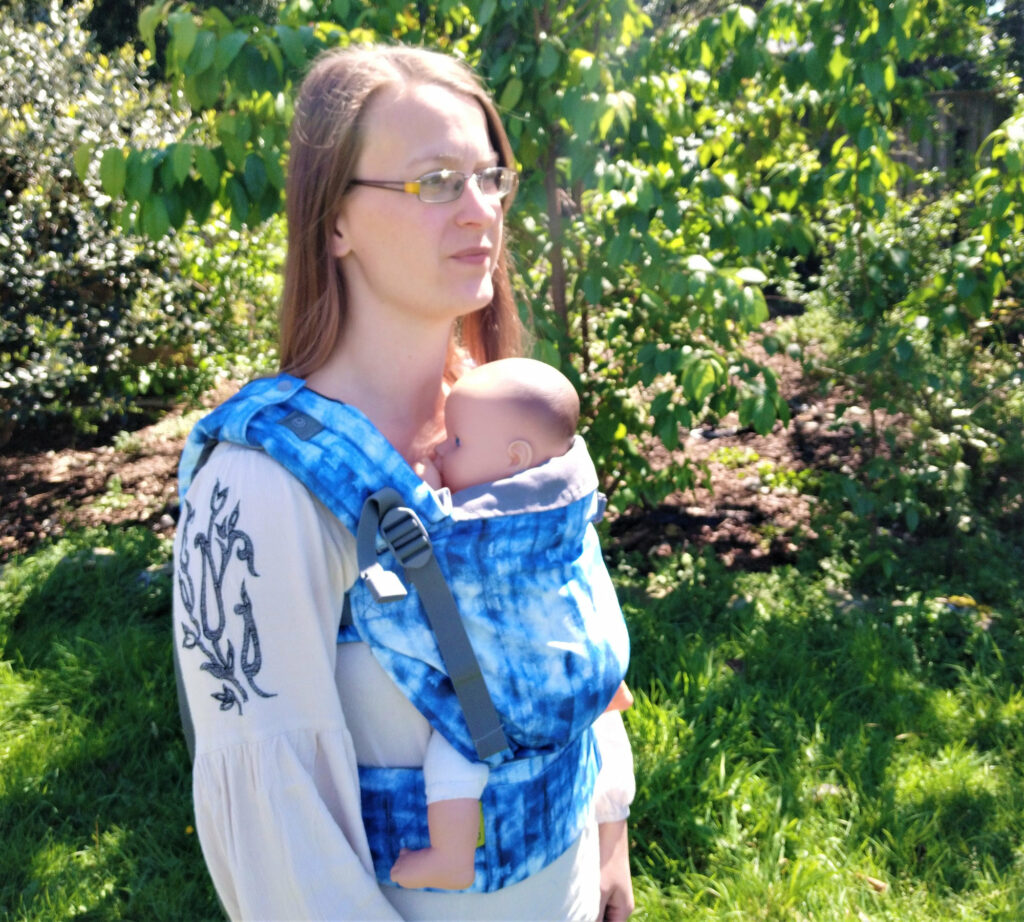Soft structured carriers (or buckle carriers) are the most used type of carrier. This is not surprising. Soft structured carriers are easy to use as you only need to close a few clips and tighten a couple of straps and off you go.
What makes things tricky though are all those different options that are out on the market and are growing by the day! When choosing a carrier, it is not just about the print on the fabric, but also about all kinds of different extra features that can make life easier – or not.
Here are my 5 top tips (plus one bonus tip) for using a soft structured carrier:
1. Try before you buy
Soft structured carriers come in all kind of forms, shapes, and sizes. It is tricky to know in advance which carrier will fit you and your baby best. If you do have the opportunity to try different soft structured carriers (with a consultant, at a babywearing meeting, from friends) I can highly recommend trying as many carriers as possible. This will help you to make a great choice when buying your own carrier.
2. Place the waistband on your belly button
It feels natural to have the waistband of your carrier on your hip bones, just like you would have the waistband of a backpack. But, unless your baby is already very tall, you will need to place your waistband higher to avoid your baby’s face being squashed between your soft breast tissue. For a newborn and small baby, I recommend having the waistband at least over your belly button or even higher. As your baby grows, adjust the waistband to be a little lower. Your aim is to have your baby’s head resting on the bony part of your chest.
3. Cross the shoulder straps
A lot of soft structured carriers have the option of crossing the shoulder straps. To check if your carrier has this option, look for a clip on the shoulder strap (it can often be found close to the back panel). Crossing the shoulder straps will help with weight distribution. This is great for heavier babies and as they get older in general. It can often be easier as well to put the carrier on with crossed shoulder straps as this means the chest clip in the middle of your back doesn’t need to be used.
4. Close the chest clip before putting on the carrier
Reaching the chest clip in the middle of your back can be quite tricky for most adults. To be able to reach the clip, you might place it too high or too low on your back, which can result in pain in your neck or slipping shoulder straps. To avoid those problems and to get the correct position for your chest clip. Move the sliders of the clip to the middle, then close the chest clip. Loosen your shoulder straps. Now place your baby in the carrier, lift the back panel over baby’s back, then duck your head under the closed chest clip and slide your arms into the shoulder straps. Tighten your shoulder straps and tighten your chest clip. Done!
5. Use the elastic loops
With most soft structured carriers, you will find elastic loops at the female buckle part (at waistband and/or shoulder straps). These loops are safety catches and will catch the male buckle part if it isn’t clipped in properly. It can be a bit fiddly to thread the clip through these loops, but it can potentially save your baby from falling.
Extra tip: How to tighten your shoulder straps
Tightening your shoulder straps is easy, right? You just pull on the straps. Well, it is not quite that easy. Because what happens if you only pull on the straps is that your baby will get squashed against you. This could make it uncomfortable for you and your baby.
A better way for tightening your shoulder straps is by lifting your baby’s bottom a little with one hand, then take the slack of one of the shoulder straps on one shoulder and feed it back towards the buckle. Now tighten the strap. Repeat this on the other side.
Share with me…
Which tip have you found the most useful?
Please share with your friends:
